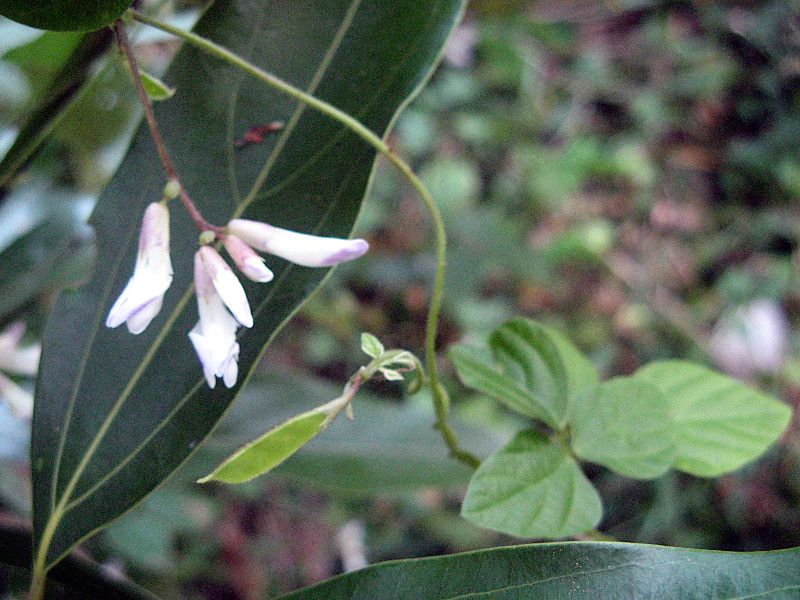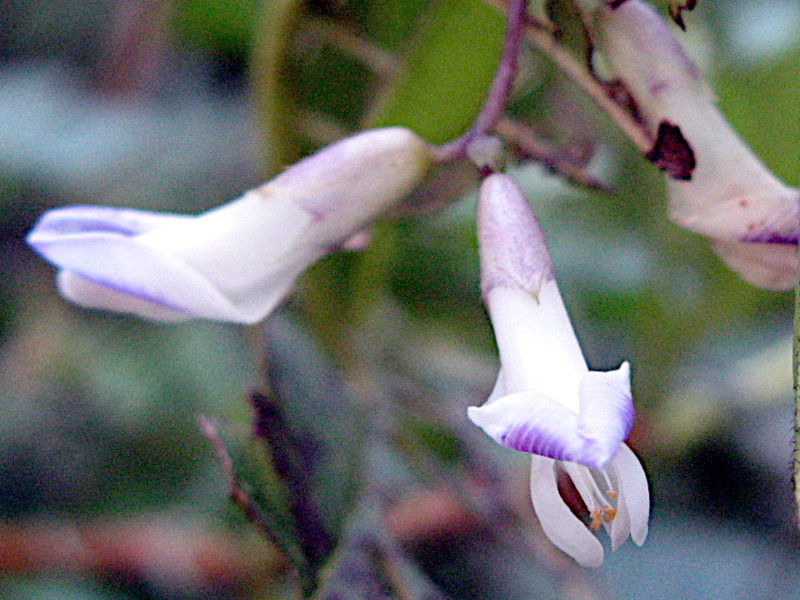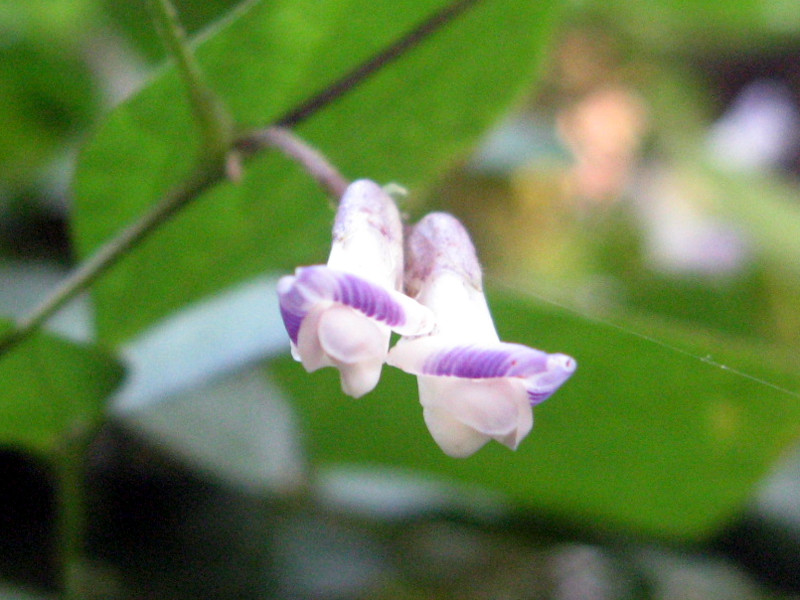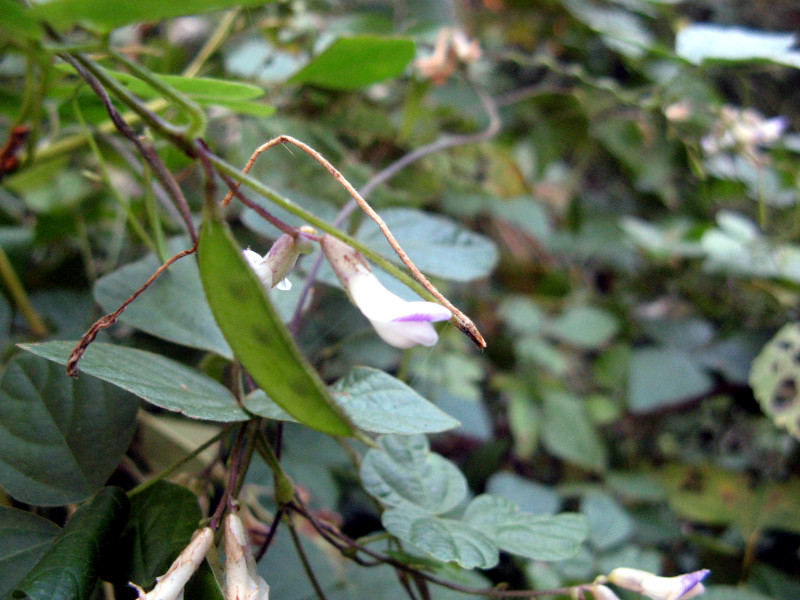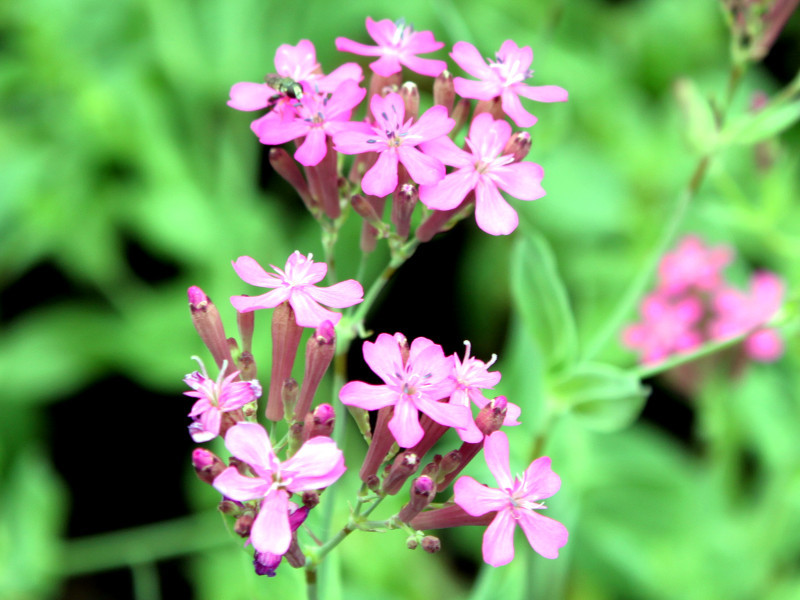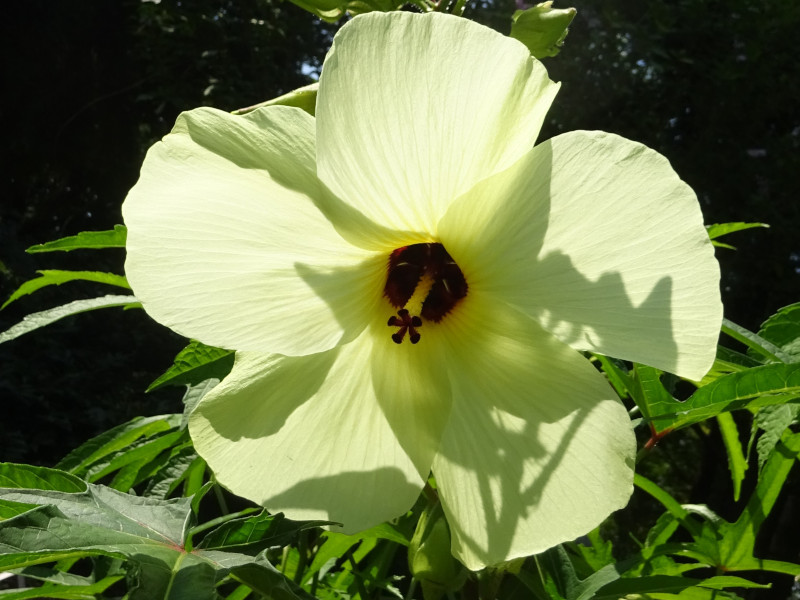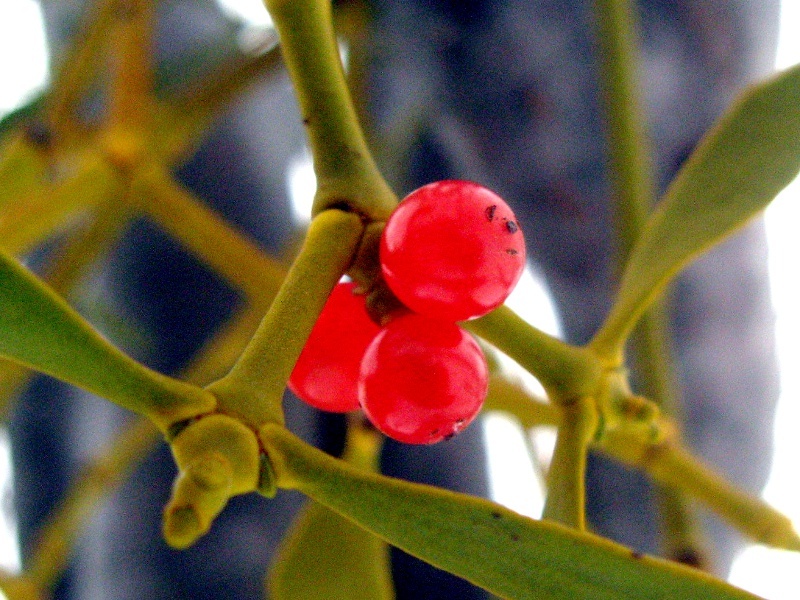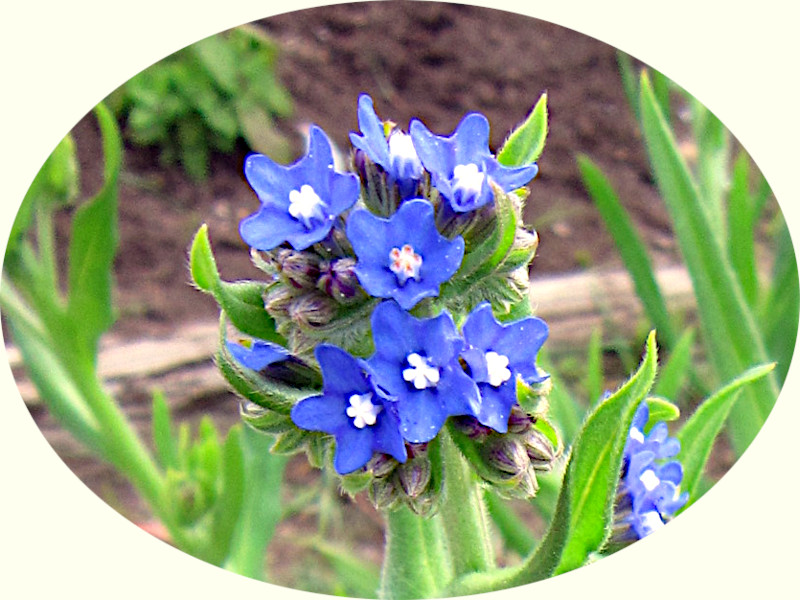Chinese hog-peanut
- Flower nameChinese hog-peanut
- Scientific nameAmphicarpaea edgeworthii var. japonica
- AliasAmphicarpaea edgeworthii, Chinese hog-peanut, ギンマメ, 藪豆, 銀豆, Yabumame
- Place of originJapan
- Place of floweringFields and footpaths
- Flowering seasonSeptember, October
What is Chinese hog-peanut
Chinese hog-peanut or Yabumame (scientific name: Amphicarpaea edgeworthii var. Japonica) is an East Asian origin such as Japan and China, and it is a wild vine grass of
the family Legume. It grows in the bushes. Hair grows on the stem. Leaves have long stems and three outbreaks. The leaflets are wide egg-shaped, with hair growing on the front and back of the leaves, sticking to each other on an alternate basis. The vines are elongated wire shaped and entangled with other plants. In autumn, a short flower stalk is extended, and several butterfly shaped florets with light purple to white wing valve and keel valve are bloomed in a light red purple color flag. Blooming ground flowers, closed flowers bloom under the ground. After the flower, it makes a flat bean sprout like a small sheath bean. Closed flowers make also be fruited and one round bean curd is made underground. Both type of beans are ripened and become black purple and can be eaten.
Generic name: Chinese hog-peanut or Yabumame, Scientific name: Amphicarpaea edgeworthii var. Japonica, aka: Chinese hog-peanut, origin: East Asian origin such as Japan and China, Distribution: Hokkaido ~ Kyushu all over Japan, environment: bush, plant length: 1 to 3 m, leaves: 3 Outbreaks leaves, leaf length: 3 to 6 cm , leaf width: 2 to 4 cm, leaf shape: egg shape, leaf order: alternate, bilaterally symmetrical flower, flower stem: short, inflorescence form: general inflorescence, flower color: wing valve and keel valve are white to light purple, flower length: 2 to 3 cm, seeds Number: 3 ~ 5.
